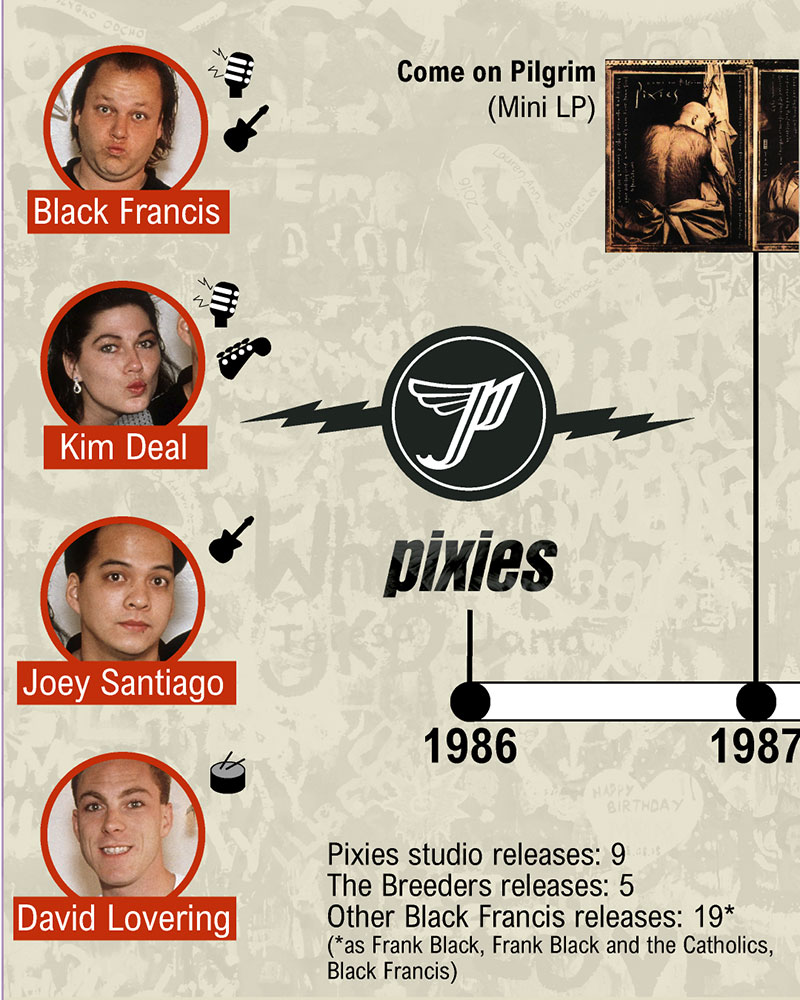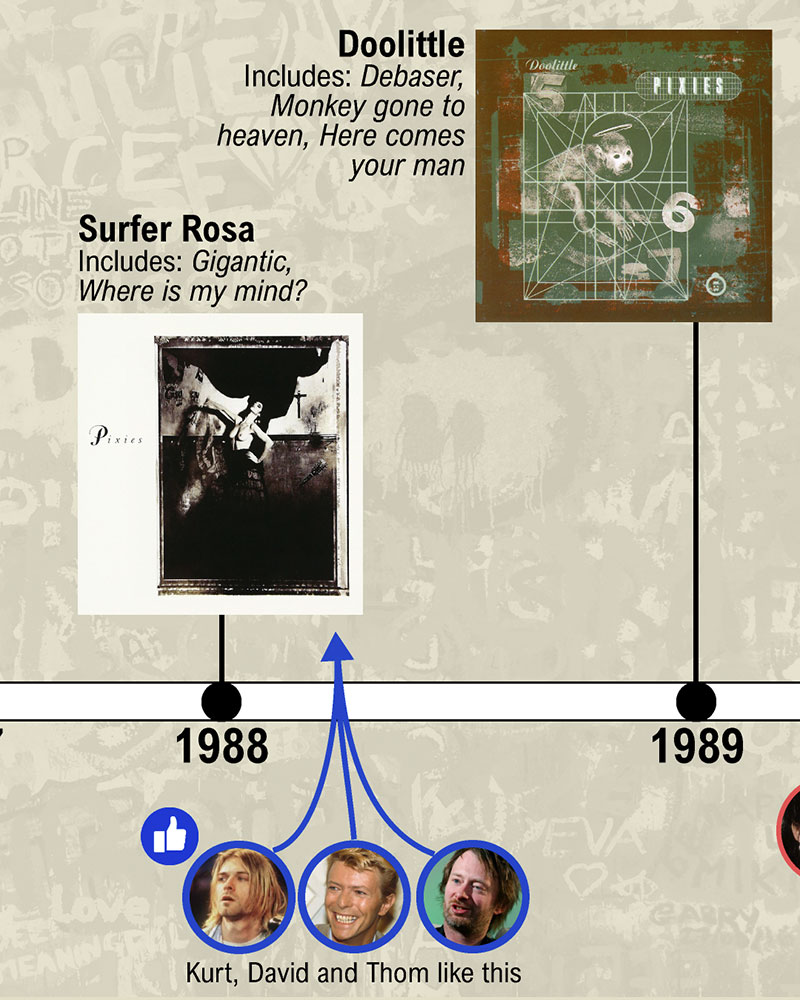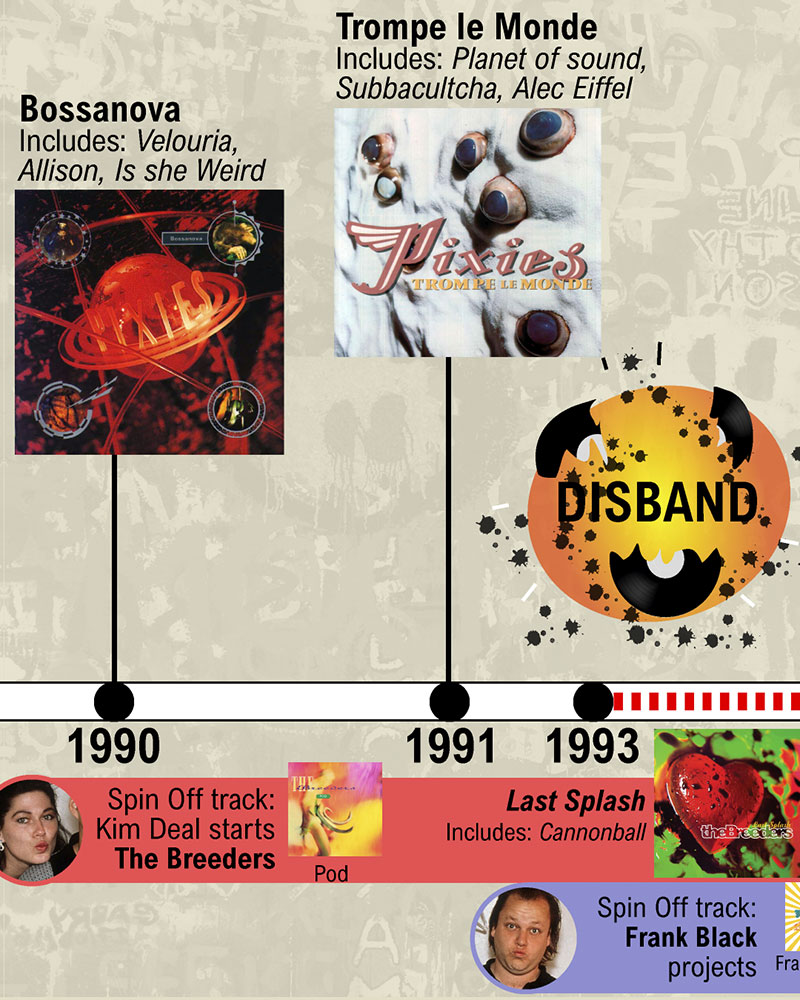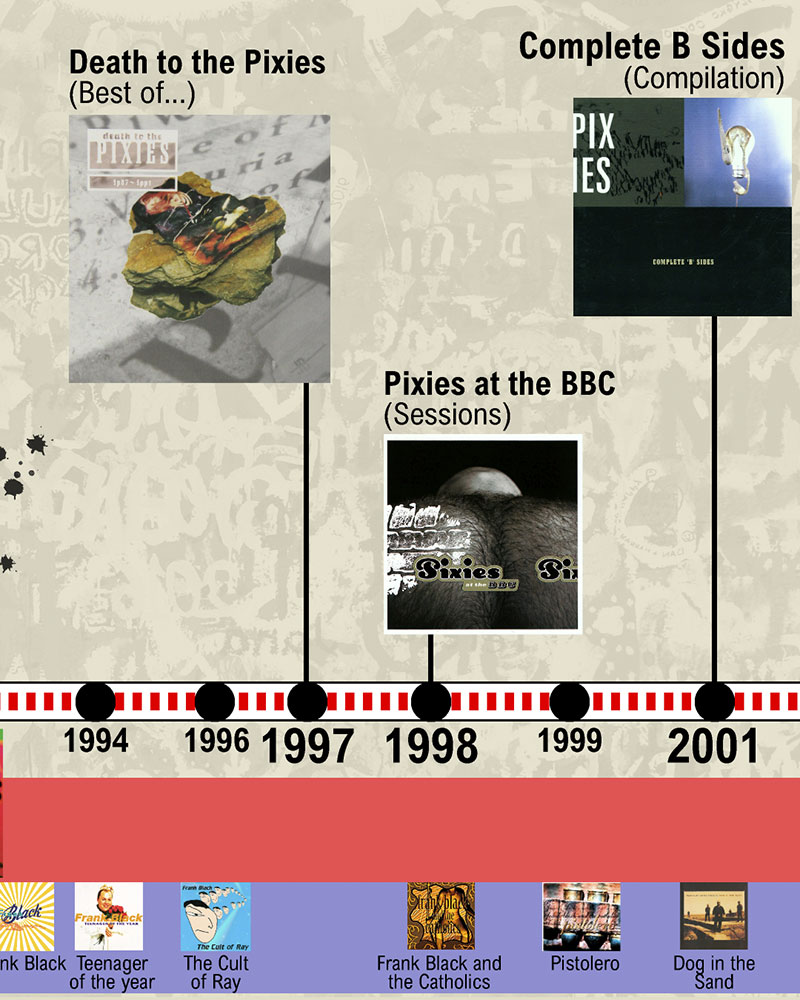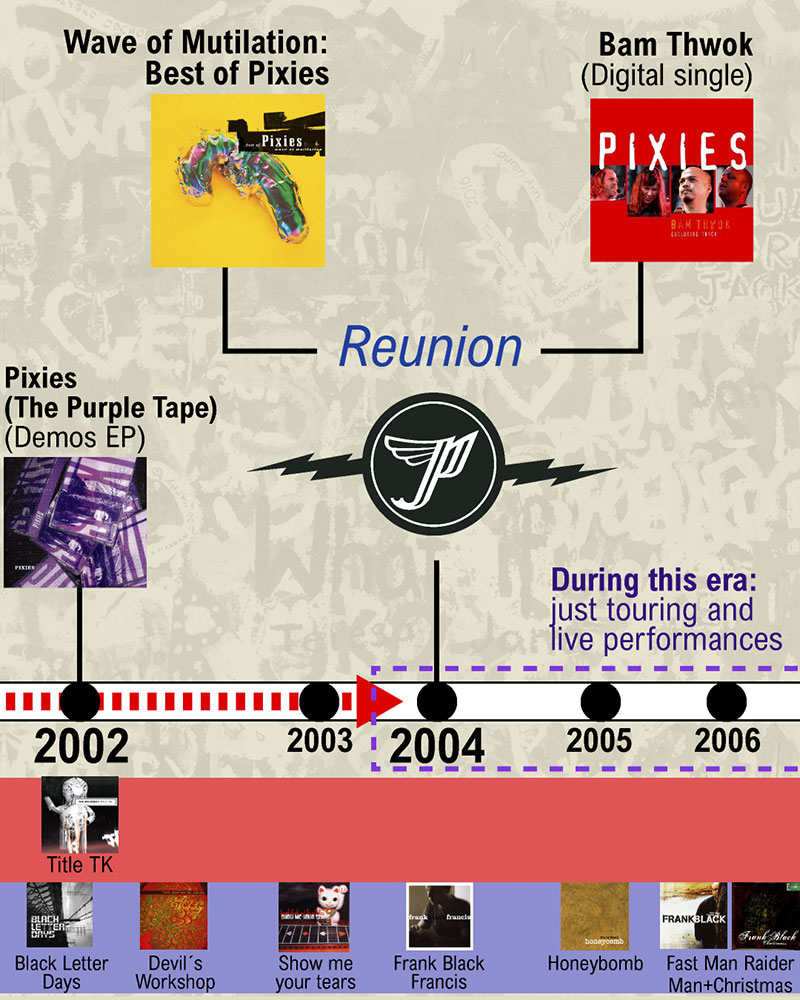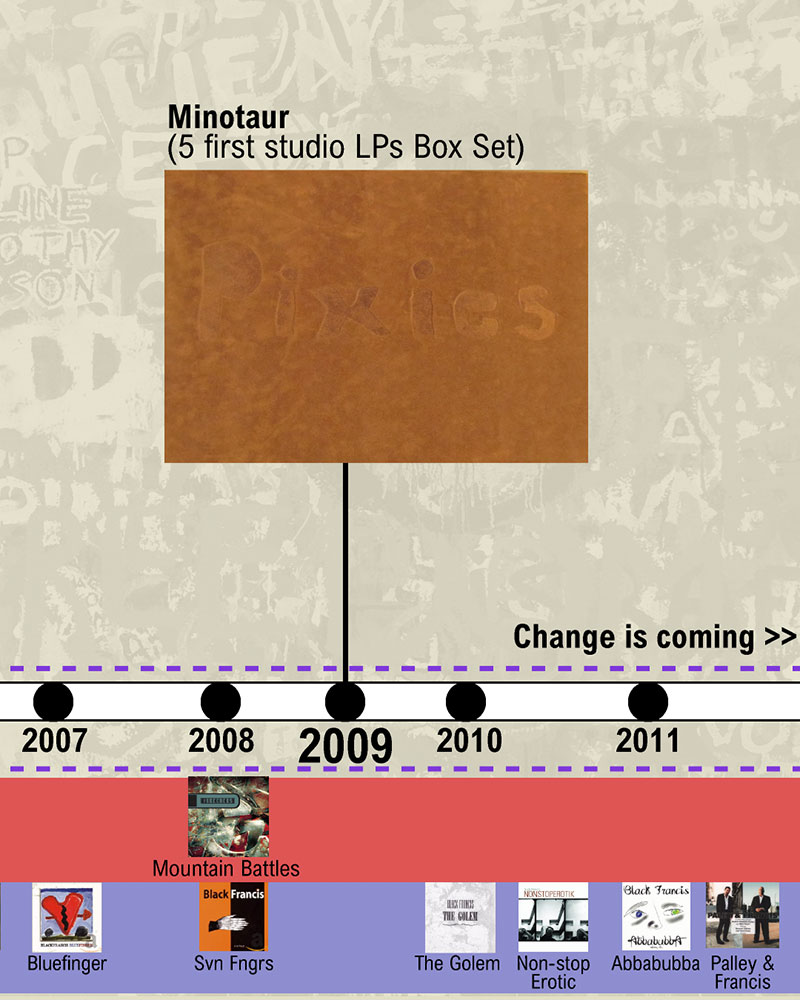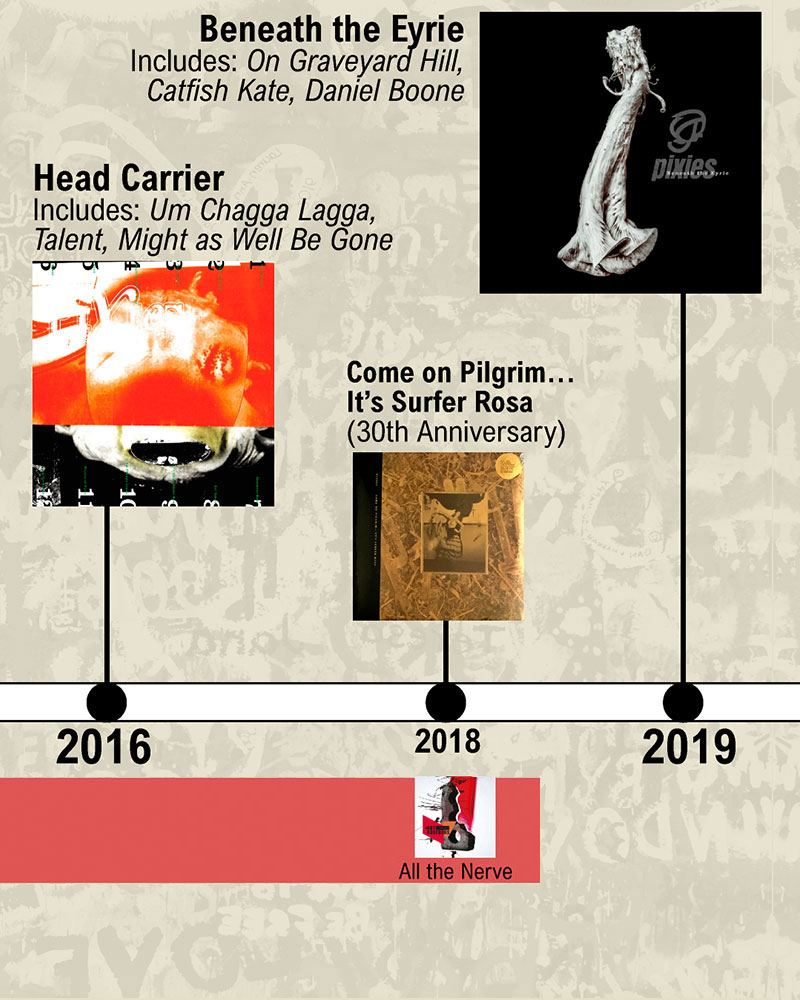The Pixies stand as titans in the landscape of alternative rock, their legacy etched in the annals of musical history. With a really noisy style and a melodic sensibility that defies convention, they carved a path that countless bands would follow.
From their humble beginnings in the late 1980s to their recent developments in the modern era, The Pixies have left an indelible mark on the fabric of rock music.
Amidst their towering influence, however, recent news has shaken the foundations of The Pixies’ world. In March 2024, fans were met with the startling revelation of Paz Lenchantin’s departure from the band. The band swiftly announced Emma Richardson as Lenchantin’s replacement, ushering in a new chapter in the history of The Pixies.
The Classic Era (1987-1993)
Origins and Come on Pilgrim
The Pixies burst onto the alternative rock scene in the late 1980s, unleashing a sonic assault that defied convention and captivated audiences worldwide. Their debut release, Come on Pilgrim (1987), served as a bold introduction to their unique blend of raw energy and melodic sensibility. Tracks like “Caribou” and “Vamos” showcased the band’s penchant for blending punk aggression with pop hooks, setting the stage for their meteoric rise.
First LP: Surfer Rosa
Following the critical acclaim of Come on Pilgrim, The Pixies unleashed their seminal album Surfer Rosa (1988). Produced by Steve Albini, the album featured iconic tracks such as “Gigantic,” “Where Is My Mind?,” and “Bone Machine,” solidifying the band’s reputation as trailblazers of the alternative rock genre. With its raw production and unapologetic lyrics, Surfer Rosa remains a cornerstone of The Pixies’ discography and a touchstone for future generations of musicians.
The Pixies first LP was highly influential: Rock and pop icon David Bowie mentioned that Come on Pilgrim is one of his favorite albums. Also, Kurt Cobain referred to the band as one of Nirvana’s huge influences. Frank Black’s band also had a significant impact on PJ Harvey’s style and sound.
Doolittle: at the doors of mainstream success
Building on the success of Surfer Rosa, The Pixies released Doolittle (1989), a masterful synthesis of pop hooks and experimental fervor. Songs like “Debaser,” “Here Comes Your Man,” and “Monkey Gone to Heaven” showcased the band’s maturation as songwriters, earning widespread acclaim and cementing their status as alternative rock icons. Doolittle stands as a testament to The Pixies’ unparalleled creativity and enduring influence on the musical landscape of the 1990s.
Bossanova, Trompe Le Monde and break up
As the decade progressed, The Pixies continued to push boundaries with albums like Bossanova (1990) and Trompe le Monde (1991). Bossanova saw the band exploring surf rock influences, while Trompe le Monde delved into more experimental territory, incorporating elements of punk, psychedelia, and sci-fi themes. Though tensions simmered within the band during this period, their creative output remained undiminished, leaving an indelible mark on the alternative rock canon.
Amidst mounting internal strife, The Pixies disbanded in 1993, leaving behind a legacy that would inspire countless musicians in the years to come.
The Tour Reunion Era: 2004-2013.
In 2004, The Pixies surprised fans with a triumphant reunion, igniting stages across the globe with their electrifying performances. Audiences were treated to the raw energy and magnetic charisma that defined The Pixies’ iconic sound, as they revisited classic albums and unleashed a torrent of hits. Despite the absence of new studio albums during this period, the band’s live shows served as a testament to their enduring popularity and undiminished prowess.
Central to this reunion was the return of bassist Kim Deal, whose distinctive vocals and dynamic presence had long been synonymous with The Pixies’ sonic identity. While Deal’s participation in the reunion tours reignited the band’s fervent fanbase, her eventual departure cast a shadow over The Pixies’ future. Despite her brief return to the fold, tensions within the band ultimately led to her exit, marking the end of an era and setting the stage for a new chapter in The Pixies’ storied history.
New Pixies Modern Era: 2013 – Present
Indie Cindy: Pixies Comeback
The dawn of the 2010s heralded a new chapter for The Pixies, marked by the release of Indie Cindy (2014) and subsequent albums that showcased their evolution as artists. With Paz Lenchantin joining the lineup, following in the footsteps of Kim Deal, the band embarked on a creative renaissance, exploring fresh musical landscapes while staying true to their distinctive sound.
Indie Cindy was the result of three previos EPS recordd during 2013. The album marked The Pixies’ long-awaited return to the studio, offering a collection of tracks that blended their signature blend of noise and melody with a newfound sense of maturity and introspection. Tracks like “Bagboy” and “Magdalena” demonstrated the band’s willingness to push boundaries and experiment with new sonic textures, earning praise from both fans and critics alike.
Also, this era market a lineup change for the band. In 2013, The Muffs frontwoman, Kim Shattuck, joined The Pixies briefly as a bass player. Shortly after, in 2014, former A Perfect Cirlcle and Zwan member Paz Lenchantin was announced as a permanent bassist.
Head Carrier
Building on the momentum of Indie Cindy, The Pixies unleashed Head Carrier (2016), a raucous affair that showcased the band firing on all cylinders. From the infectious hooks of “Classic Masher” to the frenetic energy of “Um Chagga Lagga,” the album served as a testament to The Pixies’ enduring relevance and unwavering commitment to their craft.
Beneath the Eyrie: Dark Old Pixies
In 2019, The Pixies continued to push musical boundaries with the release of Beneath the Eyrie, a haunting and atmospheric journey into the dark recesses of the human psyche. Tracks like “On Graveyard Hill” and “Catfish Kate” showcased the band’s penchant for storytelling and evocative imagery, cementing their status as masters of the macabre.
Doggerel: Most Recent Pixies
Most recently, The Pixies unleashed Doggerel (2022), a blistering assault on the senses that reaffirmed their status as one of the most influential bands in rock history. From the blistering riffs of “Goodbye” to the haunting melodies of “Solstice,” the album served as a potent reminder of The Pixies’ enduring legacy and unwavering commitment to their craft.
As explained above, 2024 marks another shift in the Pixies history. Paz Lenchantin was kicked out of the band, presumably for not being able to join the band for their intensive tour plans. Band of Skulls’ Emma Richardson was announced as her replacement, at least for the Bossanova & Trompe Le Monde tour.
Discography Highlights
- The Pixies original lineup discography: Come on Pilgrim (1987), Surfer Rosa (1988), Doolittle (1989), Bossanova (1990), Trompe le Monde (1991).
- The Pixies new line-up discography: Indie Cindy (2013), Head Carrier (2016), Beneath the Eirie (2019), Doggerel (2022).
- The Breeders: Pod (1990), Last Splash (1993), Title TK (2002), Mountain Battles (2008), All Nerve (2018).
- Frank Black: Frank Black (1993), Teenager of the Year (1994), The Cult of Ray (1996), Pistolero (1999), Devil’s Workshop (2002), Black Letter Days (2002), Show Me Your Tears (2003), Honeycomb (2005), Fast Man Raider Man (2006), Bluefinger (2007), SVN FNGRS (2008), NonStopErotik (2010), Paley & Francis (2011), The Golem (2016).


